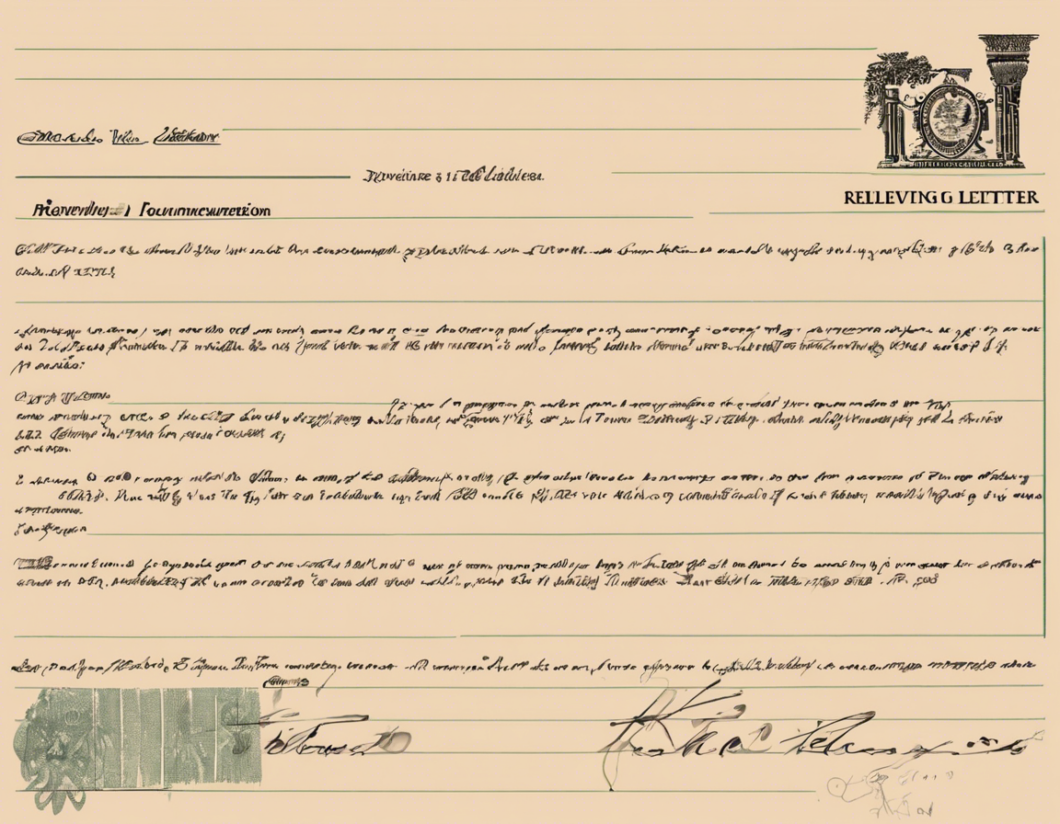Introduction
A relieving letter is a crucial document provided by an employer to an employee upon resignation or termination. It serves as acknowledgment that the employee has fulfilled their duties and responsibilities, and is relieving them from their role. Understanding the importance of a relieving letter and how to obtain one is essential for smooth career transitions. In this comprehensive guide, we will dive into the intricacies of relieving letters, why they matter, how to request one, and what to do if you encounter obstacles along the way.
What is a Relieving Letter?
A relieving letter, sometimes referred to as a service certificate, is a formal document issued by an employer to an employee who is leaving the organization. It typically includes details such as the employee’s tenure, position held, last working day, and sometimes a brief assessment of their performance. This document is important for future employment opportunities as it validates the employee’s work experience.
Importance of a Relieving Letter
-
Proof of Employment: A relieving letter serves as proof of your tenure and experience with a particular organization, which is often required by potential employers during background checks.
-
Professionalism: It reflects professionalism on your part and indicates that you left your previous job on good terms, which is valuable for building your professional reputation.
-
Legal Protection: In case of any disputes or discrepancies in the future, a relieving letter can serve as legal protection for both the employer and the employee, outlining the terms of separation.
How to Obtain a Relieving Letter
-
Submit a Formal Resignation Letter: Before requesting a relieving letter, ensure that you have submitted a formal resignation letter to your employer as per the notice period mentioned in your contract.
-
Follow up with HR: Reach out to the HR department or your direct supervisor to request a relieving letter. It is helpful to do this in writing to maintain a record of your request.
-
Provide Necessary Details: Be prepared to provide any additional information or documents required by your employer to process the relieving letter, such as an address for mailing the letter or any clearance certificates.
Challenges in Obtaining a Relieving Letter
While most organizations issue relieving letters as a standard practice, there are instances where employees face challenges in obtaining them. Some common issues include:
-
Non-Compliance: Employers may delay or refuse to provide a relieving letter due to internal policies or disputes with the employee.
-
Outstanding Dues: If there are any outstanding dues or unresolved issues between the employer and employee, the issuance of a relieving letter may be withheld until these are settled.
-
Miscommunication: Sometimes, a lack of communication between the employee and the HR department can lead to delays or confusion regarding the relieving letter.
What to Do if You Encounter Difficulties
-
Communicate Clearly: If you encounter challenges in obtaining your relieving letter, communicate clearly with the HR department or management to understand the reasons for the delay.
-
Seek Legal Advice: If the delay persists and you believe you are entitled to a relieving letter as per your employment agreement, consider seeking legal advice to explore your options.
-
Alternative Solutions: In some cases, providing a detailed experience letter from your immediate supervisor or another senior colleague may suffice as an alternative to a relieving letter.
FAQs (Frequently Asked Questions)
- Do I need a relieving letter for every job I leave?
-
While it is not mandatory, having a relieving letter from each previous job can enhance your credibility and streamline future job applications.
-
Can I request a relieving letter after I have already left the job?
-
Yes, you can request a relieving letter even after leaving the job, as it serves as proof of your past employment.
-
What if my employer refuses to provide me with a relieving letter?
-
If your employer refuses to issue a relieving letter without a valid reason, you may seek legal recourse or explore alternative documentation to validate your work experience.
-
Can a relieving letter be issued digitally or does it have to be a physical copy?
-
Relieving letters can be issued in both physical and digital formats, depending on the organization’s policies and practices.
-
Is a relieving letter the same as an experience certificate?
- While related, a relieving letter and an experience certificate serve different purposes. A relieving letter confirms the termination of employment, while an experience certificate provides a detailed overview of your job roles and skills during your tenure.
In conclusion, a relieving letter plays a significant role in an individual’s professional journey by validating their work experience and demonstrating a track record of professionalism. Understanding the process of obtaining a relieving letter and addressing any challenges that may arise is essential for a seamless transition between jobs. By prioritizing communication, clarity, and adherence to protocols, individuals can navigate the relieving letter process with confidence and ease.
